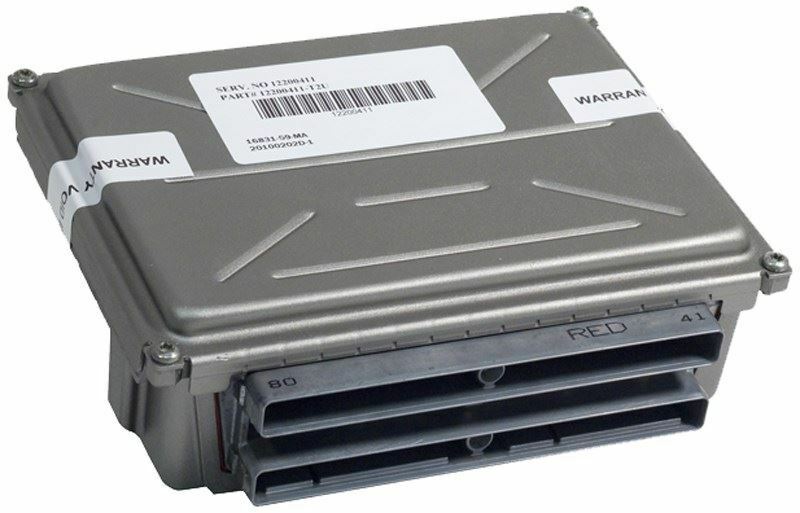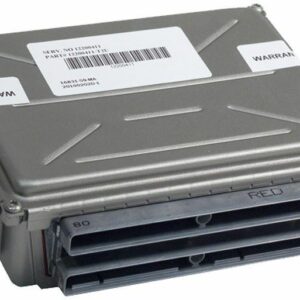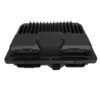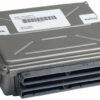Restore Peak Performance to Your GM Vehicle
Is your 1998-1999 Pontiac Grand Am, or another compatible GM vehicle, suffering from frustrating and unpredictable issues? A failing Powertrain Control Module (PCM) is often the culprit behind problems like a persistent Check Engine Light, rough idling, poor fuel economy, or even a no-start condition. As the brain of your vehicle’s engine and transmission, a faulty PCM can wreak havoc on drivability. This isn’t just an inconvenience; it can affect your vehicle’s reliability and safety. This replacement PCM is the definitive solution, arriving at your door fully programmed with the latest GM software updates specific to your vehicle’s VIN.
From the Diagnostic Bay
I remember a 1999 Alero with the 3.4L V6 that came into my shop—a car that shares this exact PCM with the Grand Am. The owner was at his wit’s end. The car would run fine for days, then suddenly stall at a stoplight and refuse to restart for 10 minutes. No consistent codes, just pure frustration. After checking all the usual suspects—fuel pressure, crank sensor, ignition system—we focused on the PCM. On these older GMs, heat cycles and vibrations can cause microscopic cracks in the PCM’s internal solder joints, leading to these bizarre, intermittent failures. We swapped in a pre-programmed PCM like this one, and the problem vanished instantly. It’s a fix I’ve performed countless times, turning a headache of a diagnosis into a reliable repair.
Is Your GM Vehicle Showing These Signs?
A failing PCM can manifest in various ways. If you’re experiencing any of the following, it’s a strong indicator that your engine computer needs attention. In my experience, these are the most common symptoms I see in the shop:
- ✔ Persistent Check Engine Light (CEL) that won’t clear
- ✔ Diagnostic Trouble Codes (DTCs) related to internal module failure, such as P0601, P0604, or P0605
- ✔ Unexplained stalling or engine cutting out while driving
- ✔ Harsh or erratic automatic transmission shifting
- ✔ A noticeable drop in fuel mileage
- ✔ Engine cranks but refuses to start (no-start condition)
- ✔ Communication errors with diagnostic scan tools
A Straightforward Guide to Installation
One of the biggest benefits of this module is that it arrives ready to install, with no need for an expensive trip to the dealership for programming. With basic hand tools, most DIY mechanics can complete this job in under an hour. Here is a simple guide to get you back on the road:
- Safety First: Always disconnect the negative terminal from your vehicle’s battery and wait at least 10 minutes for the system capacitors to discharge.
- Locate the PCM: On most of these vehicles, the PCM is located in the engine bay, often inside the air filter box assembly or mounted to the firewall. On some models like the ’99 Grand Am/Alero, it’s under the dash on the driver’s side.
- Disconnect and Remove: Carefully unplug the electrical connectors. They have locking tabs that may need to be gently pried or squeezed. Once disconnected, unbolt the module from its mounting bracket.
- Install the New Module: Bolt the new, pre-programmed PCM into place. Firmly reconnect the electrical harnesses, ensuring they click and lock securely. A poor connection is a common source of post-installation problems.
- Reconnect and Test: Reconnect the negative battery terminal. Your vehicle may require a security relearn procedure, which is a simple process you can typically do yourself (instructions are easily found online or in your owner’s manual). Start the engine and check for proper operation.
Why Our Pre-Programmed 1998-1999 Grand Am PCM is the Right Choice
This isn’t just a replacement part; it’s a complete solution. We take a quality, tested PCM and flash it with the most current, stable software calibration from General Motors using your vehicle’s unique VIN. This process ensures perfect compatibility and can even resolve drivability issues that were present from the factory. You’re getting a module that is functionally superior to the one your car was built with, correcting for years of known bugs and inefficiencies.
Verified Vehicle Compatibility
This module is a direct-fit replacement for a wide range of GM vehicles. Please verify your vehicle and engine options below. This part replaces service numbers: 09356741, 16236757, 9357034, 9357440, 9366314.
ALERO 99 (LH center dash, 3.4L, ID 16236757, 9356741, 9357440)
BONNEVILLE 98
CAMARO 98 (6-231, 3.8L)
CENTURY 98 (6-191, 3.1L)
CUTLASS 98
CUTLASS 99 (LH center dash, ID 16236757)
EIGHTY EIGHT 98
FIREBIRD 98 (6-231, 3.8L)
GRAND AM 98 (6-191, 3.1L)
GRAND AM 99 (LH center dash, 3.4L, ID 16236757, 9356741, 9366314, 9357034, 9347440)
GRAND PRIX 98
INTRIGUE 98
LESABRE 98 (6-231, 3.8L)
LUMINA CAR 98 (LH engine compartment)
MALIBU 98 (6-191, 3.1L)
MONTE CARLO 98
PARK AVENUE 98 (6-231, 3.8L)
REGAL 98
RIVIERA 98 (6-231, 3.8L)
SILHOUETTE 98 (LH engine compartment)
SKYLARK 98 (6-191, 3.1L)
TRANS SPORT 98 (LH engine compartment)
VENTURE 98 (6-207, 3.4L)
Frequently Asked Questions
Where do I find my vehicle’s VIN?
Your 17-digit Vehicle Identification Number (VIN) can be found on your vehicle’s registration, insurance card, or on a metal plate on the driver’s side of the dashboard, visible through the windshield.
Is any additional programming required after I install it?
No. This PCM arrives fully programmed to your VIN with the latest GM software. In most cases, you will just need to perform a simple security relearn procedure (also known as a VATS relearn), which takes about 30 minutes and does not require any special tools.
What if I order the wrong part?
We program the module based on the VIN you provide, which eliminates compatibility guesswork. By matching the software to your VIN, we ensure it is the correct part for your vehicle’s specific configuration.
Will this fix my transmission shifting problems?
The PCM controls both the engine and the transmission. If your shifting issues are caused by faulty electronic commands from a failing computer, then yes, this part will resolve those problems and restore smooth shifting.
Is this part difficult to install for a DIYer?
Not at all. With basic hand tools and the ability to disconnect the battery and unplug a few connectors, most people can install this module in their own driveway. The key is that the difficult programming work is already done for you.



